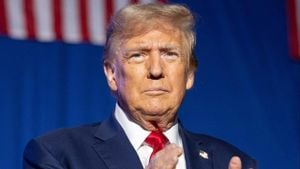China's economy is facing significant challenges as youth unemployment continues to rise, reaching 17.1 percent in July. This figure marked the highest level recorded this year as the country grapples with various economic pressures.
According to the National Bureau of Statistics (NBS), the unemployment rate among young people aged 16 to 24 has sharply increased from June's 13.2 percent. This jump can be attributed to several factors, including fierce competition from nearly 12 million university graduates who entered the market this June.
Chinese Premier Li Qiang has emphasized the importance of addressing the concerns of struggling companies, acknowledging the need for the government to hear their difficulties. The government's attention to these challenges highlights the urgency of stabilizing the job market.
The youth unemployment rate previously peaked at 21.3 percent back in June 2023, prompting the government to change its reporting methodology to exclude students. This adjustment was implemented as part of broader efforts to manage the narrative around joblessness.
Compounding the issue, many sectors are experiencing difficulties, with the unemployment rate for those aged 25 to 29 rising slightly to 6.5 percent from the prior month's rate of 6.4 percent. For the overall workforce, the unemployment rate stood at 5.2 percent, but this figure only reflects urban areas, meaning the actual scenario may be graver.
Recent economic data from Beijing indicates sluggish industrial production growth, which rose by only 5.1 percent. This represents a decline from June's 5.3 percent growth and fell short of analyst expectations, raising concerns about the economy's momentum.
Meanwhile, the real estate market continues to struggle, with major cities witnessing another drop in property prices. A decrease in demand for bank loans was also noted, marking the first contraction recorded in nearly 20 years.
With international headwinds intensifying, including trade barriers imposed by the European Union and the United States, the outlook for China's economy remains uncertain. Increased scrutiny of China's competitive practices has added pressure to the economic situation, complicizing recovery efforts.
Craig Allen, president of the U.S.-China Business Council, noted the need for innovation and green development as potential pathways for economic revitalization. He expressed optimism about the potential investments from American companies, highlighting areas like healthcare, education, and climate change.
These sectors present significant opportunities for collaboration, particularly considering China's aging population and growing middle class. U.S. firms remain eager to engage and invest, emphasizing long-term commitment to growth within China’s market.
Business leaders like Allen recognize the importance of addressing overcapacity issues within the manufacturing sector as banks shift their support base. By providing loans primarily to manufacturers and reducing funding to real estate, the Chinese economy aims to rebalance its industrial focus.
The third plenary session of the Communist Party of China has been pivotal, with discussions geared toward boosting domestic consumption and facilitating market exits for nonperforming companies. Such measures are seen as critical to the overall health of China's economy.
Allen highlighted the potential impact of the recent policy changes at the plenary, predicting a significant rise in R&D investment to support technological advancement. With research already constituting 2.6 percent of GDP, the expectation is for this number to increase, benefitting both U.S. and Chinese businesses.
Attention to intellectual property protection and fair treatment for foreign enterprises also emerged as significant focuses of discussion during the plenum. These developments could lead to greater confidence among international investors, fostering positive growth around U.S. and China relations.
Looking forward, Allen reaffirms his optimism about China contributing about 30 percent of global GDP growth through 2026, according to the International Monetary Fund. This positions the Chinese economy as not just a local powerhouse but as a fundamental player on the global stage.
Expectations are high as U.S. companies actively seek partnerships aimed at boosting growth. Allen stated, “We want to be a part of the market and we will be.”



